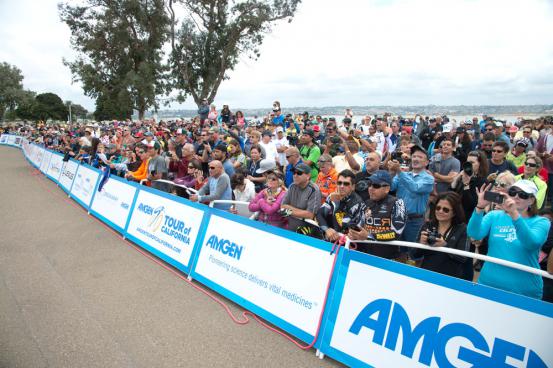- Commissioner’s statement on Ventura, Marte
- Ronnie O’Sullivan: Masters champion ‘felt so vulnerable’ in final
- Arron Fletcher Wins 2017 WSOP International Circuit Marrakech Main Event ($140,224)
- Smith challenges Warner to go big in India
- Moncada No. 1 on MLB Pipeline’s Top 10 2B Prospects list
- Braves land 2 on MLB Pipeline’s Top 10 2B Prospects list
- Kingery makes MLB Pipeline’s Top 10 2B Prospects list
- New Zealand wrap up 2-0 after Bangladesh implosion
- Mathews, Pradeep, Gunathilaka to return to Sri Lanka
- Elliott hopes for rain for Poli
California dreaming: Why the Amgen Tour is sucessful
- Updated: May 16, 2016

Nearly three decades before his turn as an improbable, bombastic presidential candidate, Donald Trump was the equally improbable sponsor of one of the biggest events in American cycling history. Even then, his knack for ambitious proclamations was already well formed.
“This is an event that can be tremendous in the future, and it can really, very much rival the Tour de France,” the real estate mogul told NBC at the inaugural 1989 Tour de Trump.
It was a strong statement, brimming with the sort of saying-it-will-make-it-so confidence we now recognize as a Trump hallmark. Remarkably, though, even a European contingent still skeptical of American racing had to admit there was something to it. Dutch climber Gert-Jan Theunisse told the New York Times that the race “could be bigger than the Tour de France, because of the money.”
Anything seemed possible in 1989. The American cycling community was still riding high after the 1986 world championships in Colorado Springs. The void left by the loss of its premier international stage race, the Coors Classic, was immediately filled by Trump’s eastern counterpart. Greg LeMond had brought home the New World’s first Tour title. The U.S. 7-Eleven team had proven itself in the European peloton with Andy Hampsten’s 1988 Giro win. But for all that momentum, the stage race that would rival the Tour de France never materialized. Instead, America’s three-week dreams receded as it struggled to sustain even week-long events beyond infancy.
Trump’s taste for cycling was predictably fleeting, and Delaware-based chemical giant DuPont took over the race after just two years. But by July of 1996, DuPont departed as well, citing a need to focus “on strategic markets in other parts of the world where a sustained annual program versus a two-week event can better leverage the DuPont brand equity for profitable growth.”
It was the sort of corporate-speak that would become frustratingly familiar to U.S. organizers and fans as race after race fell to lack of funding. The Tour de Georgia ran six editions before title sponsorships dried up. The Tour of Missouri’s state tourism funding evaporated after just three editions. The USA Pro Challenge, blessed with Rocky Mountain vistas, a 2.HC UCI rating, and proximity to the Canadian WorldTour races, still could not cover costs after its fifth running, despite claims that it would reach profitability in three. After founders Rick and Richard Schaden bowed out, the new ownership group did not secure sufficient funding for the 2016 edition and announced its cancellation in February, vowing a 2017 return. Such revivals are not unheard of, but neither are they common.
Now 28 years in the grave, the Coors Classic still stands as the longest-lived major American stage race with 14 editions between 1975 and 1988. Heavily reliant on fickle sponsorship dollars and public funds that can shift with political whims, and without the television revenues that keep many European races in the black, U.S. stage races still struggle to survive.
There is still hope for a lasting, premier …
continue reading in source velonews.competitor.com
